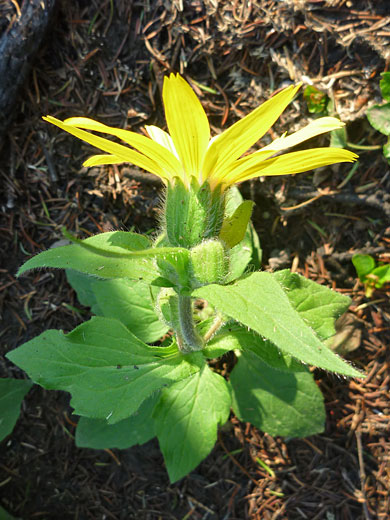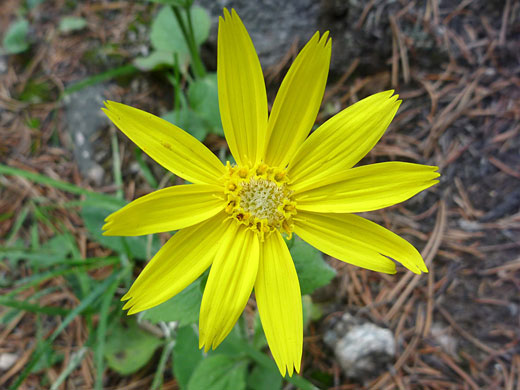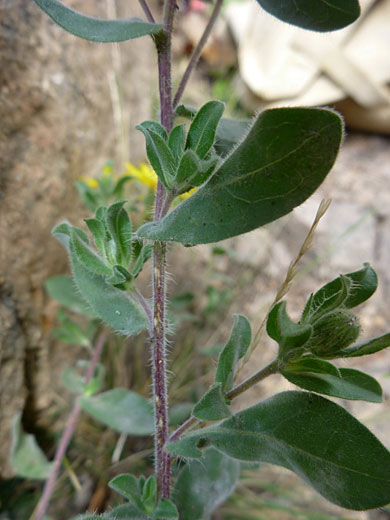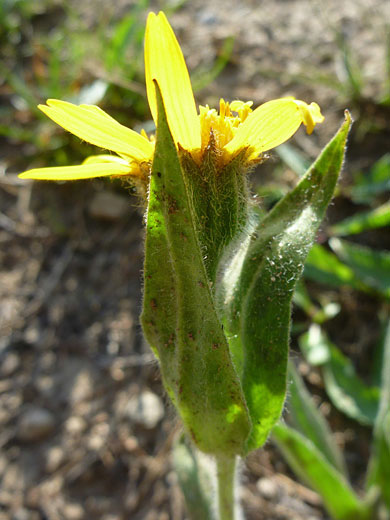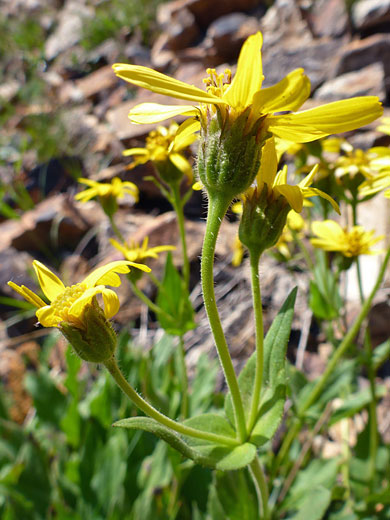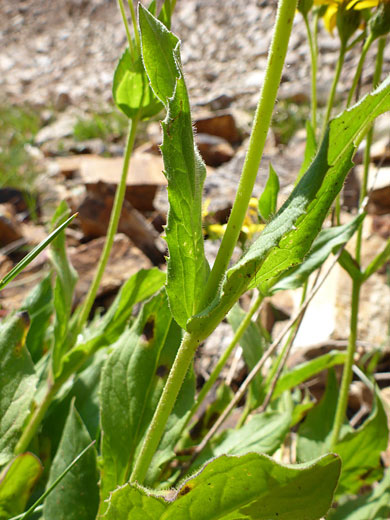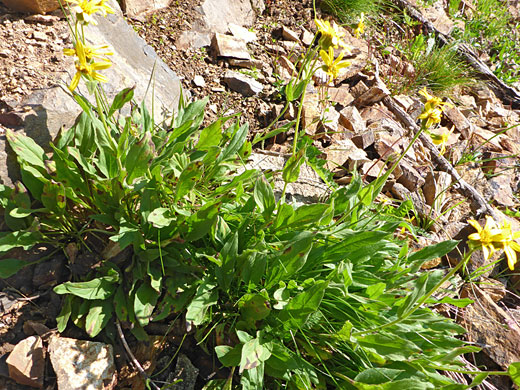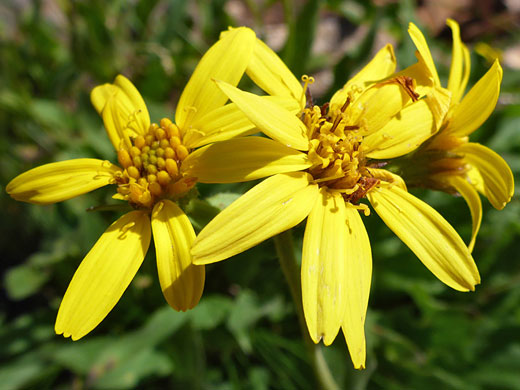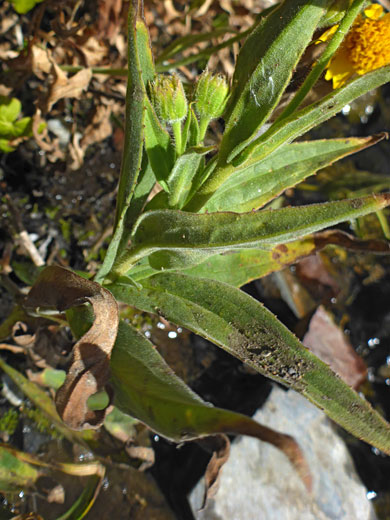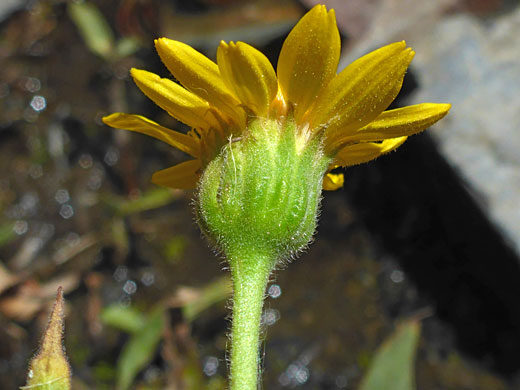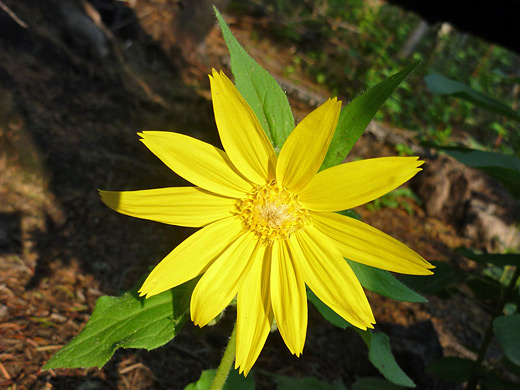
Flower and the uppermost leaves; hairy arnica (arnica mollis) along the Fern Lake Trail, Rocky Mountain National Park, Colorado
Common name:
Hairy arnica
Family:
Scientific name:
Arnica mollis
Main flower color:
Range:
Parts of most of the western states; east to the Rocky Mountains, but not Arizona
Height:
From 6 to 24 inches
Habitat:
Moist areas; meadows, forest margins, streambanks
Leaves:
Lanceolate to elliptic, up to 7 inches long, opposite
Season:
June to September
Arnica mollis is one of the hairiest members of this genus; leaf edges, leaf faces, stems and phyllaries all have a covering of long silky white hairs, often glandular (sticky). The thick stems bear 2 to 4 pairs of leaves (usually 3), and may be single or lightly branched towards the top. Leaves are sessile, lacking any stalks. Leaf edges are entire or irregularly toothed, while the tips are pointed.
Flower heads (single or up to 7) consist of between 10 and 22 pointed green phyllaries, the same number of yellow ray florets and several dozen disc florets. Rays have a few lengthwise grooves, and two notches at the tip. Phyllaries are relatively broad, lanceolate in shape, and bent back to a small extent, near their tips, which may be reddish along the edges. Plants inhabit mountainous areas, up to 13,000 feet.
Flower heads (single or up to 7) consist of between 10 and 22 pointed green phyllaries, the same number of yellow ray florets and several dozen disc florets. Rays have a few lengthwise grooves, and two notches at the tip. Phyllaries are relatively broad, lanceolate in shape, and bent back to a small extent, near their tips, which may be reddish along the edges. Plants inhabit mountainous areas, up to 13,000 feet.
All Contents © Copyright The American Southwest | Comments and Questions | Contribute | Site Map

